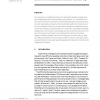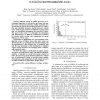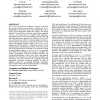756 search results - page 87 / 152 » Using topology for spatial reasoning |
AIEDAM
2002
2002
Drawing marks, acts, and reacts: Toward a computational sketching interface for architectural design
14 years 9 months ago
Architects use sketching and diagramming in their design process to perform functional reasoning, formal arrangements, analogy transfer, structure mapping, and knowledge acquisiti...
PRESENCE
1998
14 years 9 months ago
1998
Two experiments investigated components of participants’ spatial knowledge when they navigated large-scale ‘‘virtual buildings’’ using ‘‘desk-top’’ (i.e., nonimm...
FPL
2010
Springer
14 years 7 months ago
2010
Springer
Abstract--Efficient storage in spatial processors is increasingly important as such devices get larger and support more concurrent operations. Unlike sequential processors that rel...
171
click to vote
GIS
2009
ACM
15 years 11 months ago
2009
ACM
Map-matching is the process of aligning a sequence of observed user positions with the road network on a digital map. It is a fundamental pre-processing step for many applications...
ECCV
2008
Springer
15 years 11 months ago
2008
Springer
The increased use of context for high level reasoning has been popular in recent works to increase recognition accuracy. In this paper, we consider an orthogonal application of con...



